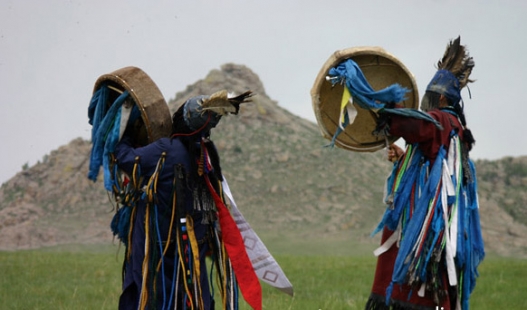These spread of many religions such as Lamaism, Christianity, Nestorian Christianity, and Islam by sending their priests to Mongolia, raising awareness of their Holy Scriptures, setting up places of worship, conducting their religious activities and popularizing their ideology clearly had an immense impact on Shamanism. For instance, “They Lamas began to spread so-called “Gurtem” and “Choijin” actively, in this way Lama-shamans in Mongolia began to overcome traditional Shamans”, wrote H.Buyanbat. (Mongolian Shamanism)
To my mind, the spread of this phenomenon predated the period of Lamaism began under the influence of the Red sect of Buddhism. In other words, the Choijins and Gurtems harnessed the natural gifts and miraculous power of the Shamans to carry out Buddhist activities. As a result, Shamanism was changed only in appearance, while the content remained essentially unchanged.
As a consequence of the dissolution of a part of Shamanism into Buddhism, the former was significantly weakened and began to lose its special position within the state. After the fall of the Yuan Empire, it became one of the main factors dividing the Mongolian peoples. Therefore, Hubilay Haan’s restructuring of China, combined with widespread of Lamaist belief among the nobility, played a considerable role in the decline and fall of Shamanism. Shamanism had lost its importance within the Mongolian state and survived only in the more remote localities, where junior Hans and nobles continued to follow older customs.
Moreover, those regional Hans were engaged in a vicious struggle for supremacy, but none of them was able to emerge victorious and establish himself as a Great Haan because some of them were Buddhists, other Shaman believers and others had Onniguud and Oirad worshipped the “Heavenly Father” by making offerings with their traditional milk-sprinkling instruments. However, Batmonkh heard that his son, the Jonon |or mandarin| of the Western Three Tumens Ulsbold had been killed, he was very angry and said, “What evildoer is responsible for this? Eberey and Mandulay! My son Ulsbold died innocent. Please pass judgment Heavenly Father”.This signifies that he worshipped the highest spirit of Mongolian Shamanism. Heavenly Father, and appealed to him for aid. Subsequently, before taking his revenge by attacking the Western Three Tumens, he asked Alagchuud’s Shaman, Tsagaan Zayran, and Uzemchin’s Lama, Donjii Bagsh, to divine the cause of Ulsbold’s killing and the outcome of the coming battle. The Shaman said, “We will win if our armies are led by the Four Fire-red rivals: men-tigers of the Borjegon Tribe”. The Lama said, “Eberey’s life is a fire”, so he made a fire and sprayed some water into it with a silver cup. From this example, it would appear that there were a number of important religions and that Mongolian Shamanism had lost primacy over the others.
Internal tensions were the main cause of Shamanism’s decline and were becoming evident due to internal rivalries according to their personal gifts. In this regard, there were a number of legends and fables among the Shamans and their believers until relatively recent times. For example, during the seventeenth century, some Mongolian shamans such as Noyo zayran of the White Huular tribe and Buh Zayran of Ahay Buriad with Haj zayran of the White Huular and Baljii udgan of the Black Darhad formed an alliance against the shamans of the Halha’s Setsen Han aimag. In the eighteenth century, Urud’s Shamans leased an Ongon of forty years in order to complete the Shamans of the White Huulars. The use of natural gifts as spiritual weapons by one Shaman against another proved cancer, which gnawed at the religion from within itself.

